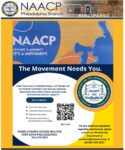ARA
Have you ever experienced creepy-crawly, tingly-tightening sensations in your legs just as you sit down and relax, especially in the evening or night? You are not alone. It is estimated that nearly 10 percent of the U.S. adult population experiences the symptoms of restless legs syndrome (RLS) while approximately 2 to 3 percent of adults have moderate to severe RLS. Even though these sensations usually occur in the legs, the fact is that RLS is a neurologic condition.
“Although the exact cause of RLS is unknown, studies continue to indicate that RLS is a long-term, neurological disorder. RLS symptoms often occur when people are about to rest or relax, causing both motor (the urge to move the legs) and sensory symptoms (the sensations in the legs),” says RLS researcher Richard Bogan, MD, president and medical director of SleepMed of South Carolina and associate clinical professor in the University of South Carolina Medical School. “Many people may live with the disruptive symptoms of RLS for years depending on the type they have, primary or secondary RLS,” he adds.
There are two types of RLS: primary RLS and secondary RLS. In primary RLS, symptoms tend to become more troublesome as adults get older, which is why most people are diagnosed in middle-age. Also, women are twice as likely as men to have RLS, and symptoms tend to become worse over time. Interestingly, a family history is reported by many patients with primary RLS, suggesting a genetic link to the disease. Research in this area is ongoing at respected institutions such as the National Institute of Neurological Disorders and Stroke, but there are still many aspects of the condition that are not well understood.
Secondary RLS is typically a short-term condition due to an underlying medical condition or certain medications. Examples include kidney failure, low levels of iron and pregnancy.
You might have RLS if your symptoms match the following four criteria:
- An urge to move the legs, usually accompanied or caused by uncomfortable and unpleasant legs sensations
- Symptoms begin or worsen during periods of rest or inactivity such as lying or sitting
- Symptoms are partially or totally relieved by movement, such as walking or stretching, at least as long as the activity continues
- Symptoms are worse or occur only in the evening or at night
Dr. Bogan advises, “If you think your symptoms match the diagnosis criteria for RLS, then speak with your physician. Only a doctor can diagnose RLS. There are lifestyle changes that may help alleviate symptoms as well as some over the counter products and FDA-approved prescription medications.”
For more information on RLS, visit www.RLS.org or www.Restlesslegs.com.















Leave a Comment